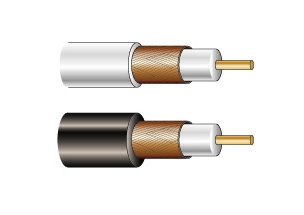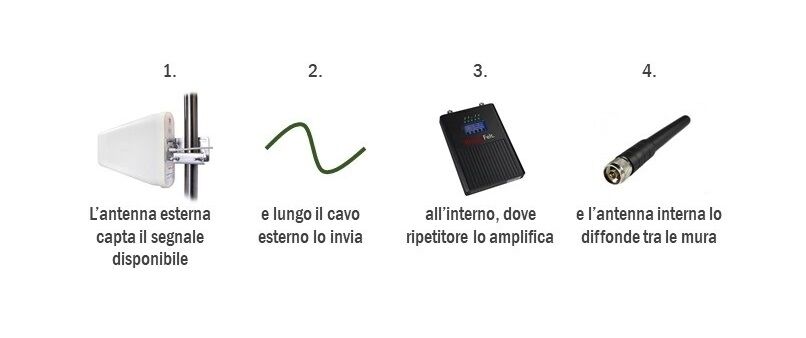
In the world of telecommunications, the coaxial cable is a means of transmitting information signals, and having to do with impedance, its key unit of measurement is the Ohm. Simplifying as much as possible, we can say that a coaxial cable is comparable to a riverbank: it is made to allow water to flow, in this case the cellular signal. Let's give a brief overview of coaxial cables below.
1.What a coaxial cable looks like
A coaxial cable is a cable with special characteristics and is basically composed of 4 layers. In the center it has a copper conducting wire, called a core. The first outer layer consists of a dielectric made of polyethylene or similar materials, with the task of keeping the copper conductor insulated from a third layer, a mesh of twisted metal wires with the purpose of shielding interference. Finally, the fourth layer, or the outer part, is a plastic sheath. Of course, at the ends, a coaxial cable has connectors that allow us to make connections to various devices. The cellular signal travels in the form of an electromagnetic field between the two metal components, the core and the mesh.

2.Types of coaxial cable
A coaxial cable can be of different types depending on the particular task it is required to perform, depending on the frequency of the signal that is to be carried, but, especially in common use, we know 2 types of coaxial cable, distinguished by impedance (Ohm).
- 50 Ohm coaxial cable
- 75 Ohm coaxial cable
The first type is used for digital and amateur radio transmissions, while the second type is used to transmit analog video signal, as well as for TV antennas and cable Internet connections.
In our world of cellular signal repeaters, the type of coaxial cable used is accordingly of the first type and always has impedance 50 Ohms.
3.Use in signal repeaters
We are obviously biased and look at coaxial cable for its utility as applied to cellular signal repeaters.
In every repeater kit, the coaxial cable plays a key role, as it connects the outdoor antenna, installed out there on the roof, with the internal part of the system.

Without the coaxial cable, in other words, the cellular signal available outside would yes be picked up by the outdoor antenna, but it could not be channeled all the way inside the building, where the repeater is located and which will then be responsible for re-amplifying and radiating, by means of the indoor antenna.
For our cellular signal repeaters we use a single type of high quality 50 Ohm coaxial cable, declined in 3 versions with different cross sections:
A 5d coaxial cable has a core size of 1.8mm, a mesh size of 5.60mm and an overall diameter of 7.5mm.
A 7d coaxial cable has a 2.6mm core, 8mm mesh and an overall diameter of 10.1mm.
A 12d coaxial cable has a 4.47mm core, a 12.5mm mesh and an overall diameter of 15mm.
To allow for custom installations we also have different lengths of course, from 5 meters to the skein of as much as 200 meters.
The standard coaxial cable you find in each kit is a 10-meter long 5d model with soldered connectors.
When coaxial cable needs to be cut to apply screw N connectors, it is good to follow some useful tips.
On all the detail pages of each coaxial cable you will also find a downloadable Pdf file with all the technical specifications, in any case you can always contact us for tailored advice!
Check out our blog to see which of the different amplifiers is right for you! How to choose the right mobile signal booster?

